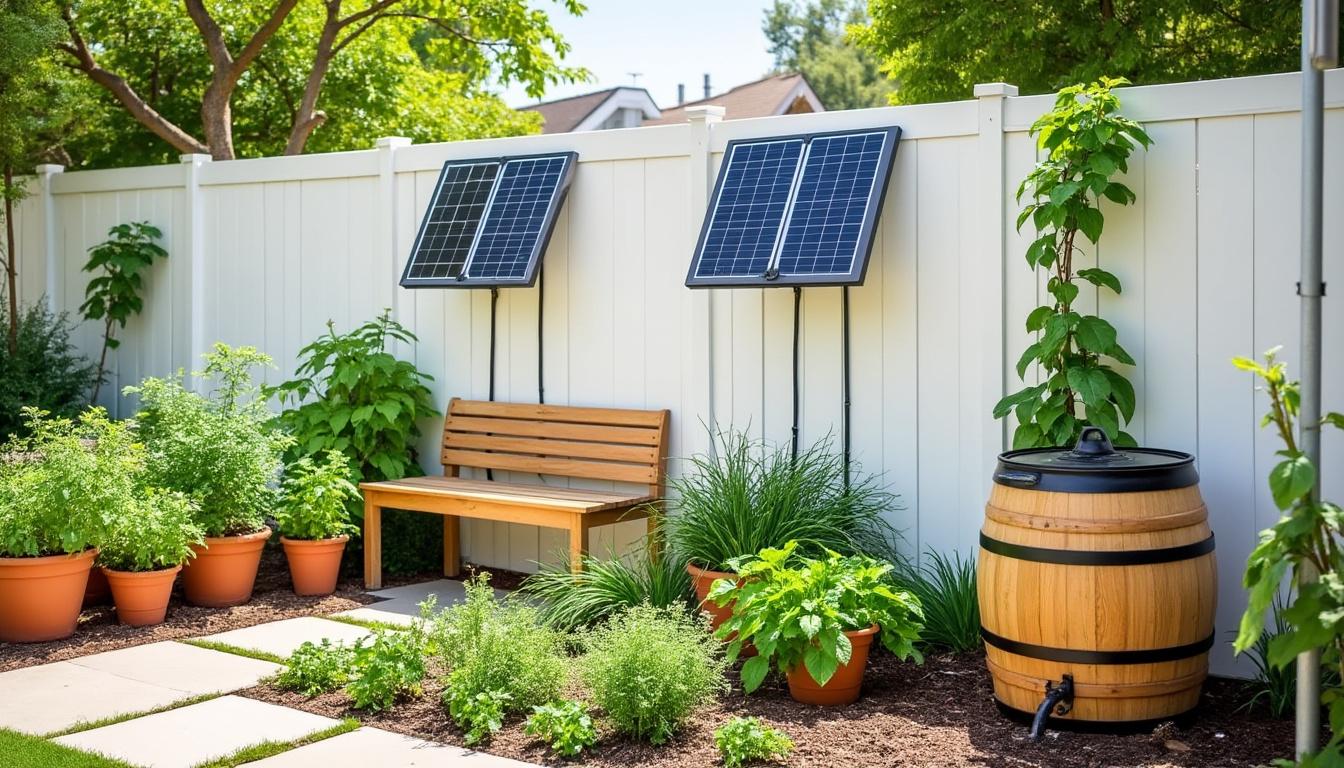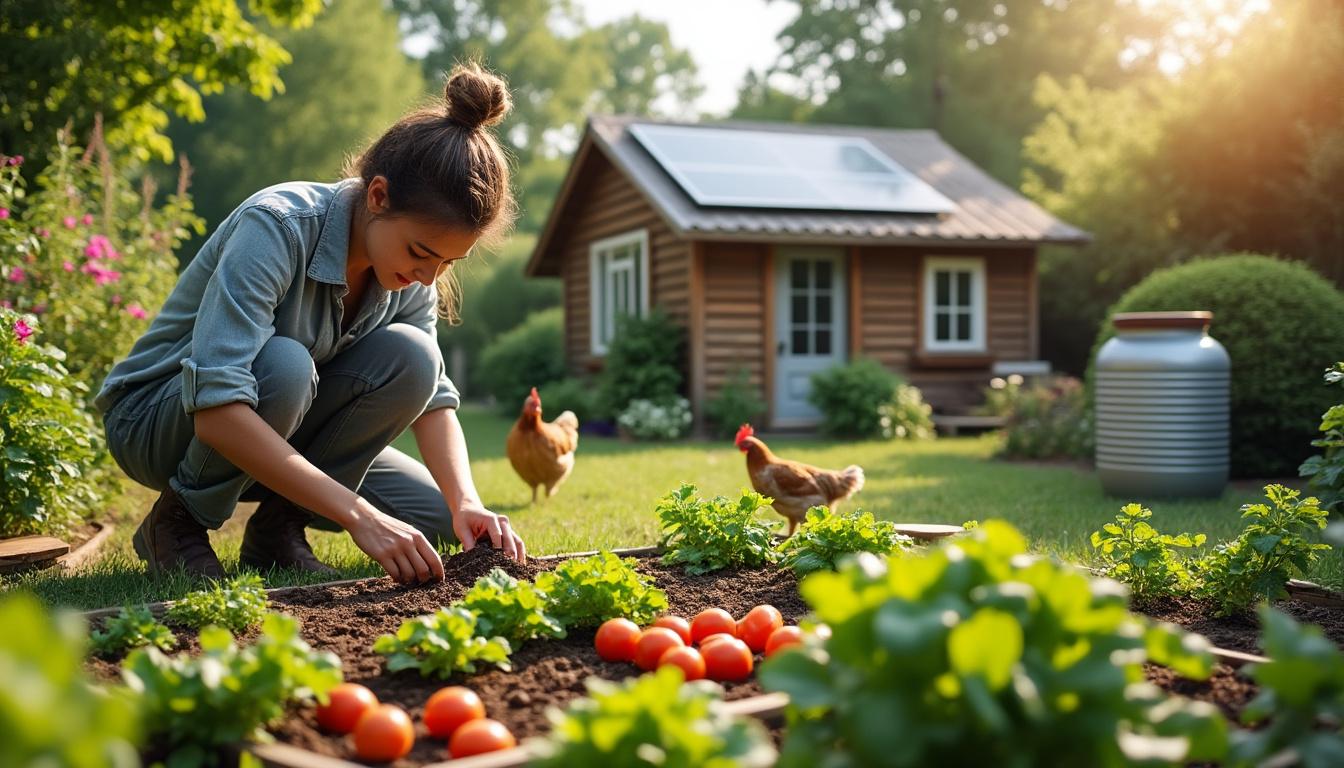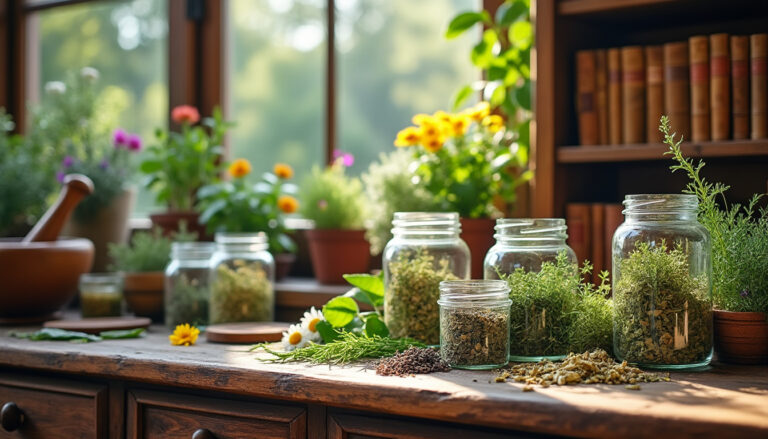What is self-reliant living? A beginner’s path to autonomy
Modern life ties many households to fragile supply chains, soaring utility costs, and dense urban stress. When a storm cuts power or a health scare empties grocery shelves, that dependence becomes impossible to ignore.
Left unchecked, every outage, price hike, or policy change can ripple through daily routines—shrinking budgets, limiting food choice, and amplifying anxiety about the next disruption.
Adopting self-reliant living flips that script. By combining age-old homesteading wisdom with today’s affordable tech, you can regain autonomy one skill at a time—whether you own fifty acres or rent a studio apartment. The following roadmap breaks down the essentials so beginners can build confidence, security, and genuine freedom.
Defining Self-Reliant Living in 2025: More Than “Off-Grid” Buzzwords
Self-reliant living focuses on meeting daily needs—food, water, energy, and health—through your own DIY systems rather than distant corporations. It is not isolation; it is strategic resilience that still values community, trade, and shared knowledge.
- 🌱 Homesteading skills (gardening, animal care) replace supermarket dependency.
- 🔋 Decentralized power (solar, wood, human muscle) cushions grid failures.
- 🧰 Repair culture keeps tools and clothes useful far beyond the warranty date.
- 🤝 Barter networks turn neighbors into allies, not competitors.

Key Terms at a Glance
| 🌟 Concept | 💡 Simple Definition | 🔗 Beginner Action |
|---|---|---|
| Self-Sufficiency | Create basics yourself | Plant one 4×8-ft bed of vegetables |
| Sustainable Living | Use resources slower than they renew | Compost food scraps weekly |
| Minimalism | Own only what adds value | Donate duplicate kitchen gadgets |
| Preparedness | Plan for disruptions | Store 30 days of shelf-stable meals |
| Off-Grid | Operate without public utilities | Add a portable 200-Watt solar panel |
Notice how none of these principles demand a remote cabin. They scale from a balcony herb box to a full acre orchard. Next comes choosing the first practical steps.
Four Core Pillars Every Beginner Should Prioritize First
Jumping into twenty-five projects at once leads to burnout. Focusing on these four pillars provides quick wins and solid momentum.
1️⃣ Food Security Without Supermarket Lines
- 🥕 Begin with fast crops: radish, lettuce, bush beans.
- 🧂 Add no-electric preservation like lacto-fermentation for probiotics and longer shelf life.
- 🌽 Transition to a local staple crop—potato in cool zones, sweet potato in warm—to lock in calories.
| 🚀 90-Day Crop | Seed Cost | Calories / 100 g | Why It’s Beginner-Friendly |
|---|---|---|---|
| Potato 🥔 | $5/5 lbs | 77 | Tolerates mediocre soil, stores 6 months |
| Green Bean 🌿 | $2/packet | 31 | Fixes nitrogen, climbs balcony trellises |
| Zucchini 🥒 | $3/packet | 17 | Prolific yields, teaches pollination basics |
2️⃣ Water Independence & Quality
Clean water is non-negotiable. Combine collection, storage, and filtration for layered security.
- 💧 Install a 200-liter rain barrel under a downspout.
- 🦠 Use a gravity ceramic filter for drinking—no power required.
- 🚿 Redirect greywater to fruit trees; they love the extra moisture.
3️⃣ Energy That Works When the Grid Doesn’t
- 🔌 Add a portable solar kit to run lights, phone, and a laptop.
- 🔥 Practice rocket-stove cooking with scrap wood to slash gas bills.
- 🌡️ Insulate windows with thermal curtains—energy saved is energy produced.
| ⚙️ System | Start-Up Cost | Daily Output | Hidden Perk 😊 |
|---|---|---|---|
| 200 Watt Solar Suitcase | $400 | 800 Wh | Charges e-bike for errands |
| Rocket Stove | $60 DIY | Boils 4 L in 15 min | Turns twigs into cooking fuel |
| Thermal Curtains | $45/window | –4 °C heat loss | Quieter rooms at night |
4️⃣ Health & Herbal Know-How
Building immunity at home complements any first-aid kit.
- 🌿 Grow immune allies: echinacea, elderberry, calendula.
- 🧴 Craft salves and tinctures—learn basics inside the herbal medicine guide.
- 📚 Keep a binder of ailments, dosage, and observations to refine treatments.
Securing these pillars frees headspace for the broader lifestyle shift explored below.
Ten Starter Projects That Fast-Track Your Path to Autonomy
Borrowed from veteran homesteaders yet adapted for busy 9-to-5 schedules, these projects teach vital skills while staying affordable.
- 🥬 Build a 4×8 raised bed filled with compost.
- ♻️ Start a kitchen-scrap worm bin under the sink.
- 🕯️ Render leftover cooking fat into emergency candles.
- 🔧 Change oil and spark plug on a lawn mower to learn small-engine basics.
- 🐓 Construct a two-hen coop for daily eggs.
- 🥛 Try stovetop yogurt with store-bought milk to practice culturing.
- 🛠️ Sew a ripped backpack strap instead of replacing the bag.
- 📻 Assemble a hand-crank radio kit for preparedness drills.
- 🍞 Bake sourdough using a wild starter—no commercial yeast needed.
- 📈 Sell excess produce at a weekend farmers market to test a side income.
| 📅 Week | Project | Skill Learned | Cost |
|---|---|---|---|
| 1 | Raised Bed | Soil Science | $60 |
| 2 | Worm Bin | Waste Cycling | $25 |
| 3 | Fat Candles | Alternative Light | $0 (scraps) |
| 4 | Engine Tune-Up | Mechanics | $15 |
Stacking small wins like these transforms theory into muscle memory, accelerating genuine Self-reliance.
Mindset, Community, and the Shift From Consumer to Producer
Technical skills matter, yet mental elasticity determines whether they stick during pressure. Sara, a suburban parent from Oregon, offers a real-world case.
After a three-day winter blackout in 2024, her family realised candles and canned beans were not enough. By spring, Sara joined a local “Skill-Share Saturday,” swapping sourdough classes for help installing rain barrels. One year later, the household meets 40 % of its fresh produce needs and barters eggs for car repairs.
Practical Ways to Cultivate Resilience & Minimalism
- 🧘♂️ Schedule weekly “tech-free afternoons” to practise living without streaming or online shopping.
- 📓 Keep a wins journal—record each repaired tool or harvested tomato to reinforce progress.
- 🤝 Form a barter circle via neighborhood chat apps; list three skills you can offer and three you need.
| 🤝 Barter Item | Offer | Seek |
|---|---|---|
| Eggs 🥚 | 12 ct/week | Bike tune-up |
| Soap Bars 🧼 | 5 lavender bars | Firewood stack help |
| Herbal Tincture 🌿 | Elderberry 2 oz | Metalwork lesson |
For deeper guidance on turning property into a profitable micro-farm, explore this comprehensive homestead guide.
Remember: skills compound. Each home-grown carrot or repaired fence panel rewires the brain from passive consumerism toward active creation—exactly the mindset that fuels autonomy.
Quick-Reference Checklist to Launch Your Self-Reliant Journey
- ✅ Plant one raised bed this weekend.
- ✅ Collect 20 gallons of rain by next month.
- ✅ Cook two meals on a rocket stove before winter.
- ✅ Replace paper towels with cloth rags.
- ✅ Attend one local swap or workshop within 30 days.
| 🎯 Goal | Time Frame | Measure of Success |
|---|---|---|
| Harvest 10 lbs vegetables | 90 days | Scale shows weight |
| Cut grid power use 20 % | 6 months | Utility bill drop |
| Sell first farm-gate product | 1 year | $50 revenue |
Embrace these micro-milestones and the broader tapestry of self-reliant living will emerge naturally—step by rewarding step.
FAQ: Your Top Questions Answered
How much land is required to become self-reliant?
Even a sunny balcony can grow herbs, sprouts, and microgreens. Aim for more space over time, but start wherever you are.
Is going fully Off-Grid realistic for renters?
Complete disconnection is tricky, yet renters can still harvest rain, set up portable solar, and practise low-tech cooking to cut 50 % of utility dependence.
What’s the fastest way to build food storage without a freezer?
Focus on dehydration, fermentation, and dry staples like beans and rice sealed with oxygen absorbers.
How can children participate?
Assign age-appropriate tasks—seed starting, turning compost, or tracking solar output—to teach science and responsibility simultaneously.
Where can beginners learn herbal first aid safely?
Begin with the step-by-step tutorials and dosage charts inside this tincture guide before experimenting.







